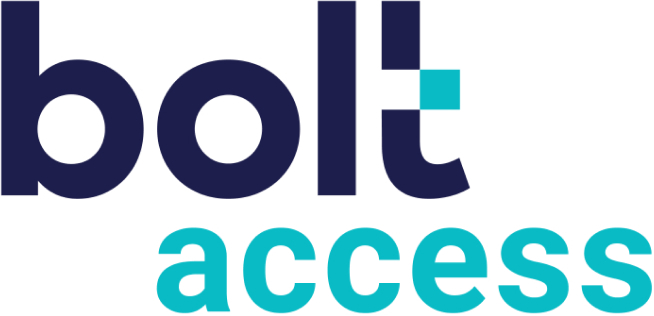
"Having an effective means of lead generation is integral to an independent agent’s success. This is what puts you on a prospect’s radar and initiates their journey through the sales funnel. Lead generation can come in many forms. But one of the best techniques pound-for-pound is blogging. In fact, marketers who blog get 67 percent more leads than those who don’t, digital strategist Olivia Allen writes. And unlike sales people, a blog works for you around the clock and is constantly generating new leads. But for your blog to have a legitimate impact, it’s crucial that it delivers real value to your digital community. Here’s how to start a helpful blog your audience will love and that generates an ongoing stream of qualified leads.
Choose the Right URL
Your URL (website address) is a simple yet critical component and something you want to get right. The WPBeginner team points out that it can impact your brand and search rankings. And because it’s troublesome to change later on, you want to choose the right name from the start. If you’re building a website from scratch, you’ll want to go with a dot-com extension because these tend to be the most trusted and are easy to remember. Using targeted keywords in your domain name lets both humans and search engines know what your content is about. WPBeginner suggests keeping the URL relatively short at under 15 characters and to avoid hyphens. Make it brandable so prospects can identify you.
Install Relevant Plugins
Like many successful bloggers, author and writing instructor Joshua Fields Millburn is a huge proponent of WordPress — the internet’s leading blogging platform. One of the reasons he loves it is because it offers thousands of different plugins that you can use to customize and optimize your blog. There are plugins for SEO, analytics, social sharing and boosting site speed just to name a few. Millburn says that they literally take just a few seconds to install and allow you to play around with your site to make it the best it possibly can be. So if you use WordPress, you’ll definitely want to check out their vast library of plugins and install some to enhance your blog.
Create Insightful Content
There are considerably more than 440 million blogs in existence online, with some 409 million people reading over 22 billion pages a month, the Mediakix team estimates. That’s a lot of competition — and opportunity. And as you might imagine, there can be a significant disparity in the quality level of the content that’s published. As an independent agent, it’s vital that you’re a leader and create insightful content that delivers real value for your audience. Otherwise, it will get lost in the mix. So how do you provide value? For starters, you need to have the right mentality — to educate and inform your audience rather than promote your insurance products over and over again. A common mistake brands make is being “too promotional,” marketing editor Nickie Bartels writes at Influence & Co. Forcing mentions of your insurance company and the coverage you offer is a quick way to turn visitors off and detracts from their overall experience. While you’ll obviously want to promote your brand and sell insurance, it’s important that it doesn’t consume your strategy to the point that you’re “salesy.” The trick is to be subtle and natural about it. Do that and you should be in good shape. In terms of the specific elements of a great blog post, content marketer Ivan Kreimer says it should have a captivating headline that sets out the reader take-away will capture your audience’s attention. That’s how you get your foot in the door and motivate readers to check out your content. When it comes to the actual post itself, the reader should find it genuinely useful and contain ultra-specific, practical information. For instance, if you were writing a blog post about P&C insurance, you might mention some different scenarios where it would be useful (such as a person’s home being vandalized). Alex Turnbull, founder of the help desk software company Groove, suggests adding stories to better illustrate key points. When he tested the strategy of including a story in a post against one with no lead-in narrative, he found that full page reads were higher by nearly 300 percent for the article with the story and that the average time spent on the page was 520 percent longer. Scannability is also critical in this day and age. UX strategy and design expert Kara Pernice says that the majority of people using digital devices now scan content rather than reading it word for word. Therefore, it’s important to design content that accommodates scanning — something she says can be done by breaking text down into small paragraphs with plenty of white space, using headers and subheaders and adding bullet points when appropriate.
Target Long Tail Keywords
Many readers will find your blog posts through searches. One of the best ways to increase your visibility in search engines is to target long tail keywords. “Long tail keywords are a type of keyword phrase that has at least three, and sometimes as many as five words in the phrase,” the Brick Marketing team says. “Long tail keywords are used when the website wants to refine search terms to the web page, as well as when the searcher is looking for something rather specific.” Instead of going after a broad keyword phrase like “boat insurance,” you would target a long tail phrase like “boat insurance for older boats.” This technique may bring less traffic, but it’s more quality traffic that leads to conversions. Finding phrases that people are actually typing into Google when they search is easy. Senior SEO and content marketing manager at WordStream, Elisa Gabbert, says to search a broad keyword phrase in Google, and see what suggestions pop up. Then browse through Google’s related searches at the bottom of the search results page. Beyond that, you can always use a free tool like the Moz Keyword Explorer. Not only will this give you ideas, it will also show you how much competition a particular keyword has.
Avoid “Thin” Content
Word count is a big deal these days. Seldom will you find short posts under 500 words ranking in the top search engine results. In fact, SEO and marketing expert Brian Dean found that the average word count of blog posts on page one of Google clocked in at 1,890 words. The expectation is that longer content tends to be more robust, insightful and helpful. It should dissect a topic and provide readers with valuable information so they can take away something useful. On the other hand, thin content — regardless of word count — doesn’t provide value. SEO consultant Michelle Foolen says that not only is this something your readers won’t like, Google doesn’t like it either, and it can really hurt your search rankings. So be sure to be comprehensive with your blog posts, and make sure that they’re meaty enough with original content to provide your readers with all of information they need.
Update Consistently
Another thing independent agents should be aware of is posting frequency. You need to find the sweet spot in terms of how often you post new content. And the consensus seems to be the more the better. Publishing high quality content often is what 70 percent of marketers say they find effective, Angel Ninofranco at Search Engine Journal writes. To clarify, Senior Marketing Manager at HubSpot Lindsay Kolowich breaks down some data from a study that found the correlation between consistent updates and the amount of traffic generated.
- Businesses that blog 11+ times per month had nearly 3 times more traffic than those that only posted 0-1 times per month.
- Those that blogged 16+ times per month did even better and received roughly 4.5 more leads than companies that published 0-4 posts.
The bottom line is that you should be consistent with your blogging. While you don’t want to post something just for the sake of posting it and should always uphold rigorous quality standards, it’s clear that consistency is something that readers and search engines value. Consistency is what helps create the foundation of a solid content marketing strategy, Grace Hirt at BlogMutt writes, adding that you should add fresh content to your blog at an absolute minimum of once a week.
Creating a Successful Blog from the Ground Up
Digital marketer Lizzie Kardon says that the number one thing that makes a blog successful is reader engagement. Having an engaged audience means they’re more likely to absorb your content, be receptive to the information you’re providing and want to know more about your brand. In turn, this increases your lead quality, and a higher percentage of readers will contact you about purchasing insurance coverage. Following the points mentioned here are what should enable you to start an interesting blog that gets readers excited so that they genuinely want to engage. Once you do this, the leads should follow. Images by: StockSnap, rawpixel, 742680"
Talk to an expert
Contact us
